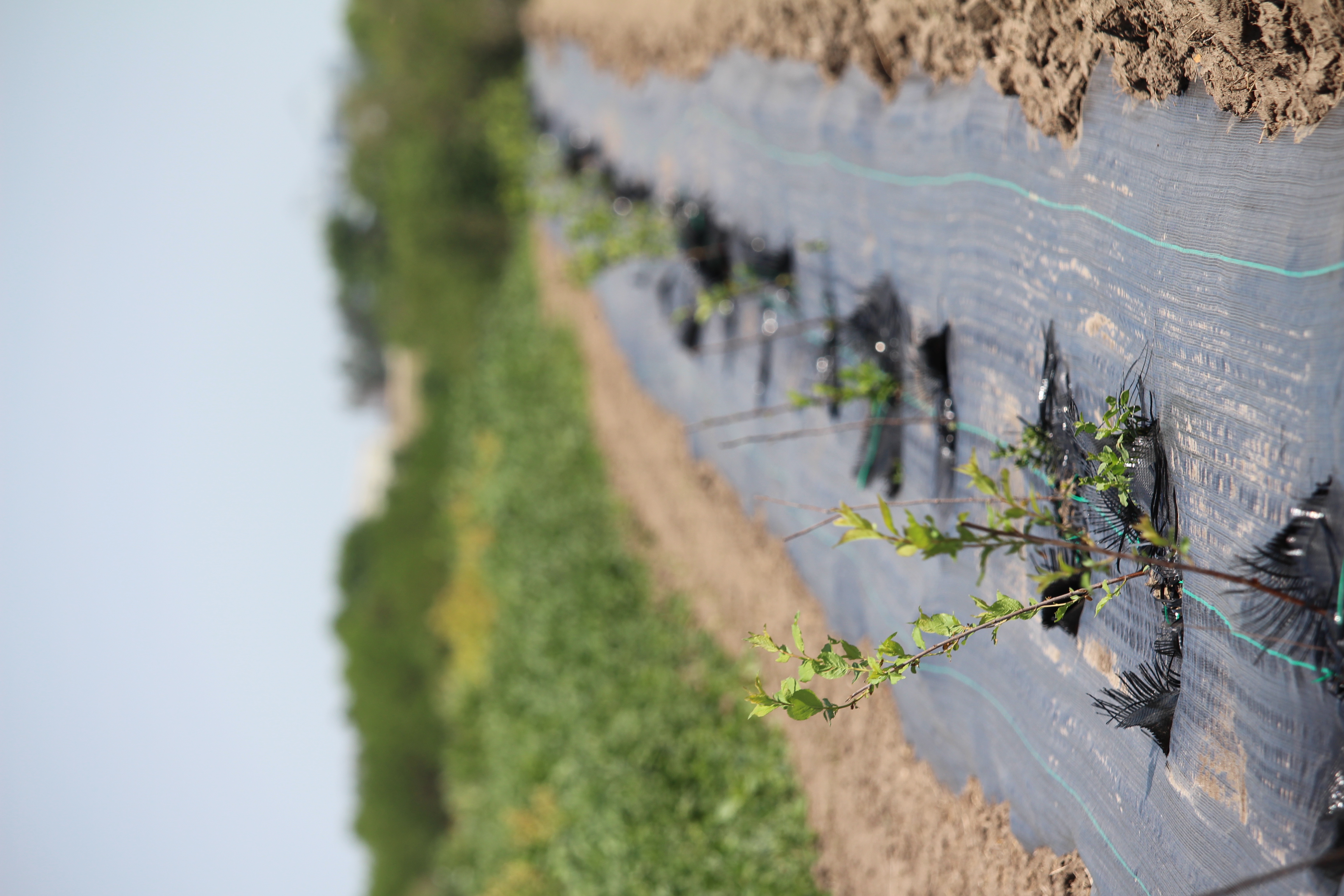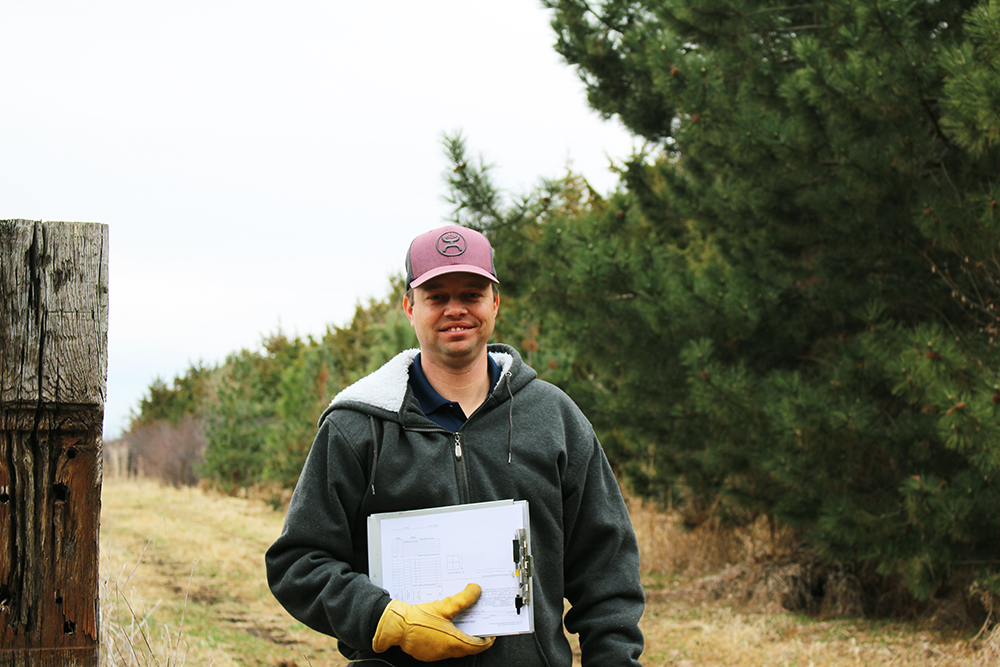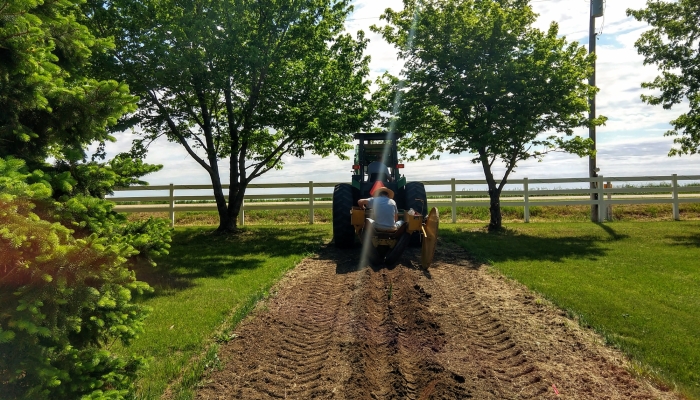Windbreaks & Large Plantings: Let the NRD Help!
The Upper Big Blue NRD is committed to helping district residents and landowners see the benefits available through windbreak planting. That’s why we offer low-cost trees, planning and planting services. Orders are collected November 1 through March 30 and trees arrive in mid-April, just in time for spring.
There are cost-share funds available through the district’s Land Treatment Program for qualifying landowners for the installation or improvement of a windbreak, as well as for the installation of weed barrier fabric mulch around a new planting.
So Many Reasons Why
According to the University of Nebraska Extension Office, there are plenty of reasons to plant trees. Here are just a few:
Windbreaks are perfect for Nebraska, as they provide the greatest benefits in areas with high winds, large amounts of snow, extreme temperature fluctuations, or minimal natural forest cover. Well-designed windbreaks reduce the amount of energy needed to heat and cool your home by 20 to 40 percent. When winter winds are combined with low temps, the resulting wind chill may create dangerous conditions. A moderately dense windbreak will reduce a 20 mph wind to approximately 5 mph out to a distance of 5H (H=height of windbreak). The trees keep you warmer in winter by reducing windspeeds and cooler in summer by providing shade.
A windbreak can be a natural air freshener. Trees and shrubs act as a natural filter, catching particles that carry odor. Some odors will be absorbed by the plants and others will be masked by more desirable smells from aromatic leaves or flowering shrubs.
Multirow windbreaks provide essential nesting, feeding, singing and breeding habitat for many birds and animals. They also provide a safe travel corridor for wildlife between feeding, watering, and resting sites. By varying tree and shrub species, you can create a smorgasbord of seeds, nuts, and fruits for area wildlife. They also sustain birds that eat pests, improve hunting opportunities, and provide a place for family outdoor activities.
Many windbreaks planted in the 1930s and 40s are losing their effectiveness due to age, poor health, or neglect. All windbreaks, even well-designed ones, need regular maintenance in order to maintain their overall structure and to continue to function as effective wind barriers. Renovating a windbreak can be a difficult task. Help in assessing your windbreak and determining the best renovation techniques is available from the NRD.
 Before you tear out an old windbreak, visit with the NRD to see what could be done to renovate it instead. Perhaps some rows could remain while others could be removed and replanted. New species could be introduced for new purposes. Even if the entire windbreak needs to be replaced, it is better to do it in stages, as the older trees will shelter the younger trees and help them get established more quickly.
Before you tear out an old windbreak, visit with the NRD to see what could be done to renovate it instead. Perhaps some rows could remain while others could be removed and replanted. New species could be introduced for new purposes. Even if the entire windbreak needs to be replaced, it is better to do it in stages, as the older trees will shelter the younger trees and help them get established more quickly.
Older windbreaks have unique benefits, as they are more likely to be adopted as shelter by hawks, owls, and cavity-nesting birds. Snags are trees that have died and possibly lost limbs, but the tops are still standing. Snags are great for wildlife. If they are not where they pose a safety hazard, consider saving part of an older windbreak for wildlife. Owls, woodpeckers, and chickadees will thank you for the additional foraging and shelter.
For the best wildlife benefits, a shelterbelt should have a developed tree canopy and an understory that includes shrubs and herbaceous plants that provide both food and cover. Some plant species provide more wildlife benefits than others and a variety of species is necessary to provide the range of habitat needs of most wildlife. In general, greater windbreak width provides better winter protection. Including a variety of trees and shrubs in the windbreak planting gives a more naturalistic landscape appearance and improves wildlife values for more species. It also reduces the chances of disease or insect pest problems.
Getting started with NRD trees
Interested in adding a windbreak to your property? Reach out to NRD District Forester Kyle Yrkoski (trees@upperbigblue.org) to get started. Tree plantings aren’t a one-size-fits-all solution. That’s why Yrkoski meets with district landowners who want to add trees to create a customized plan. He asks many questions as part of this process: What are you hoping to accomplish with trees? Are you looking for a windbreak to protect a house or crops? Do you want to improve wildlife habitat? Do you want a living privacy fence or an ornamental enhancement? How quickly do you need results? The answers to these questions guide Yrkoski’s recommendations for the project. The NRD also works with communities on urban planting needs, such as improvements to city parks. In 2020, the town of Stromsburg made use of these services when they worked with the NRD to add about 500 trees to expand the campgrounds area at Buckley Park.
For large-scale plantings, Yrkoski typically visits the property to look at geographic considerations including boundary lines, power lines, nearby roads and water ways, and trees that are already present to make sure that any additional trees planted will be well set up for growing success. Yrkoski then creates a proposal for the landowner that maps where trees could be installed, how many, and of which varieties. The plan includes a total cost for labor and trees as well as projected cost-share funds available. The Upper Big Blue, like other NRDs across the state, offers financial assistance to qualifying landowners for large-scale planting projects, such as windbreak installations, renovations, or extensions, and wildlife conservation plantings. Cost-share funds are also available for communities for improvements, including trees, in public nature areas.
Once a tree plan is complete, Yrkoski works with the landowner to fine tune the project and answer questions. Sometimes the landowner gets started with planting the following spring (NRD trees are planted each year from April to June) and other times they delay a year or two before enacting the plan. While pricing may vary slightly from one year to the next, a planting plan can easily be updated depending on when the trees will be installed. Collaborating on a tree plan with the NRD does not obligate a landowner to implement the plan, and since there is no cost to the landowner to consult on these types of projects, there is no risk involved in getting started.
Yrkoski encourages landowners who are thinking about trees to reach out to the NRD. Afterall, trees are a long maturing investment. “There’s a saying that the best time to plant a tree was ten years ago and the next best time is today,” said Yrkoski. “You may wish you had put in trees a long time ago, but it’s never too late to start. You’ll be glad you did in a year or two.” For tree resources and programs offered through the NRD, online tree orders, or to contact Yrkoski, visit www.upperbigblue.org/trees or call 402-362-6601.


